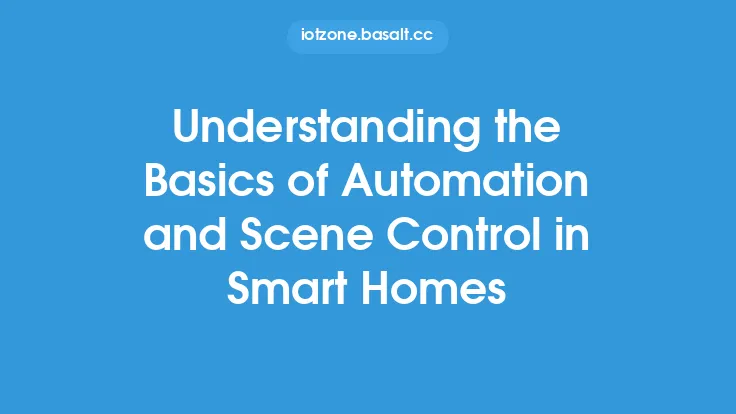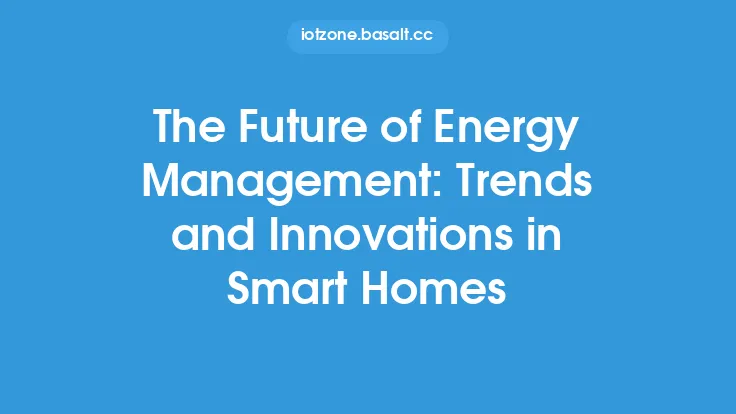The concept of smart thermostats and climate control has revolutionized the way we manage the temperature and atmosphere in our homes. At its core, a smart thermostat is a device that can learn and adapt to your temperature preferences, allowing for optimal comfort and energy efficiency. But before diving into the advanced features and benefits of smart thermostats, it's essential to understand the basics of how they work and the principles of climate control.
Introduction to Climate Control
Climate control refers to the process of regulating the temperature, humidity, and air quality in a given space. This can be achieved through various methods, including heating, cooling, ventilation, and air conditioning. The primary goal of climate control is to create a comfortable and healthy indoor environment, which is essential for both residential and commercial spaces. Climate control systems can be simple or complex, depending on the specific requirements of the space and the level of automation desired.
Components of a Smart Thermostat
A smart thermostat typically consists of several key components, including a temperature sensor, a microcontroller, a user interface, and communication protocols. The temperature sensor measures the current temperature and humidity levels in the space, while the microcontroller processes this data and makes decisions about heating or cooling. The user interface allows users to interact with the thermostat, setting temperature preferences and schedules. Communication protocols, such as Wi-Fi or Bluetooth, enable the thermostat to connect to the internet and other smart devices.
Types of Smart Thermostats
There are several types of smart thermostats available, each with its own unique features and capabilities. Some common types include learning thermostats, which can adapt to your temperature preferences over time; programmable thermostats, which allow users to set schedules and temperature settings; and wireless thermostats, which can be controlled remotely using a smartphone or tablet. Other types of smart thermostats include geothermal thermostats, which are designed for use with geothermal heating and cooling systems, and zoned thermostats, which allow for separate temperature control in different areas of the home.
How Smart Thermostats Regulate Temperature
Smart thermostats regulate temperature using a variety of algorithms and control strategies. One common approach is to use a proportional-integral-derivative (PID) controller, which adjusts the heating or cooling output based on the difference between the current temperature and the setpoint temperature. Other control strategies include on/off control, which simply turns the heating or cooling system on or off, and pulse-width modulation (PWM) control, which adjusts the output by varying the duration of the on-cycle.
Climate Control Modes
Smart thermostats often feature multiple climate control modes, which allow users to customize the temperature and humidity settings to suit their preferences. Common modes include heating mode, cooling mode, and auto mode, which automatically switches between heating and cooling based on the current temperature. Other modes may include fan-only mode, which circulates air without heating or cooling, and dry mode, which removes excess humidity from the air.
Sensors and Inputs
Smart thermostats often rely on a variety of sensors and inputs to determine the current temperature and humidity levels. These may include temperature sensors, such as thermistors or thermocouples, which measure the air temperature; humidity sensors, which measure the relative humidity; and occupancy sensors, which detect the presence or absence of people in the space. Other inputs may include weather data, which allows the thermostat to anticipate changes in temperature and humidity, and schedule data, which allows the thermostat to adjust the temperature based on the user's schedule.
Communication Protocols
Smart thermostats use a variety of communication protocols to connect to the internet and other smart devices. Common protocols include Wi-Fi, which allows for wireless connectivity to the internet; Bluetooth, which enables wireless connectivity to smartphones and tablets; and Zigbee, which is a low-power wireless protocol used for communication between devices. Other protocols may include Z-Wave, which is a wireless protocol used for home automation, and OpenTherm, which is a protocol used for communication between thermostats and heating systems.
Power and Energy Efficiency
Smart thermostats are designed to be energy-efficient and can help reduce energy consumption by optimizing the heating and cooling output. Many smart thermostats feature energy-saving modes, such as eco-mode or energy-saving mode, which reduce the temperature setpoint or adjust the heating and cooling schedule to minimize energy consumption. Other features, such as automatic software updates and remote monitoring, can also help improve energy efficiency by ensuring the thermostat is always running with the latest software and settings.
Installation and Compatibility
Smart thermostats are generally easy to install and can be compatible with a wide range of heating and cooling systems. However, it's essential to ensure compatibility before purchasing a smart thermostat, as some systems may require specific wiring or configuration. Many smart thermostats are designed to be retrofittable, meaning they can be installed in existing homes without requiring significant modifications to the heating and cooling system.
Maintenance and Troubleshooting
Smart thermostats require minimal maintenance and are designed to be self-sufficient. However, occasional software updates and cleaning of the temperature sensor may be necessary to ensure optimal performance. Troubleshooting is also relatively straightforward, with many smart thermostats featuring built-in diagnostic tools and error messages to help identify and resolve issues. In the event of a problem, users can often refer to the user manual or contact the manufacturer's support team for assistance.
Conclusion
In conclusion, smart thermostats and climate control systems offer a powerful way to manage the temperature and atmosphere in our homes. By understanding the basics of how smart thermostats work and the principles of climate control, users can unlock the full potential of these devices and enjoy optimal comfort and energy efficiency. Whether you're looking to upgrade your existing heating and cooling system or install a new smart thermostat, the information in this article provides a solid foundation for making informed decisions and getting the most out of your smart thermostat.





